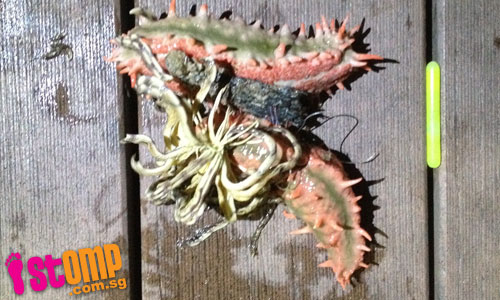
STOMPer Sadiq went fishing with his friends last night at Changi Beach Club and was surprised when he reeled in this 'sea monster'.
Said the STOMPer:
"Is this a sea monster?
"I caught in Changi Beach Club.
"At around 11pm yesterday, three friends and I made our way to Changi Beach Club for a spot of fishing.
"Prior to catching this 'sea monster', we caught about three catfish, each weighing about 1kg each.
"Around 3am, we caught this 'sea monster', it had gotten itself stuck on our hook.
"We've never seen something like this before, and we don't know what it is.
"We didn't use our hands to take it off, as we feared it might be poisonous.
"At first I thought it was a plant, then I saw it had legs which were moving.
"We took some photos of the palm-sized creature and then released it back into the water and continued fishing, where we caught some crabs."

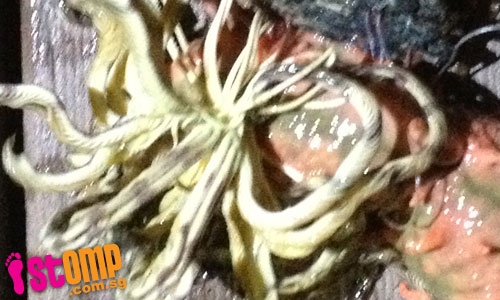
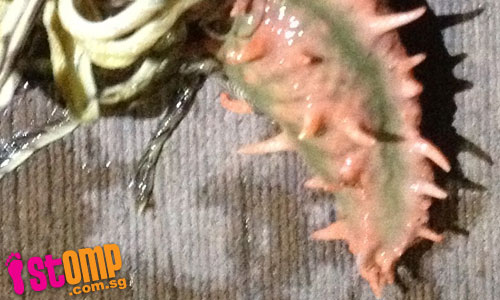
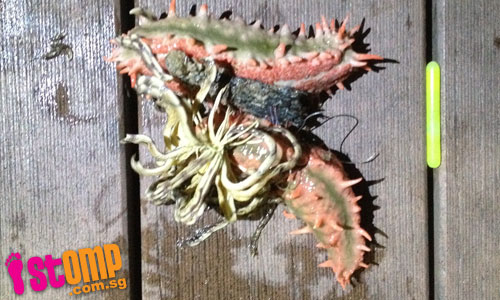
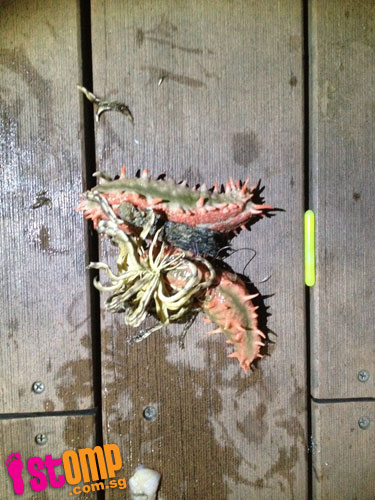
Many marine creatures, especially those that make a living out of sifting plankton from the water, attach themselves to nearby objects in the environment. Such objects can include rocks, shells, driftwood, even pipes and pieces of garbage. It appears that this is what happened here: the anglers have hooked and brought up an unidentifiable piece of rubbish that had several marine animals attached to it.
The most obvious would be the 2 thorny sea cucumbers (Colochirus quadrangularis), which make up the pink and fleshy parts of the 'sea monster'.

This is a very common species on many of our Northern shores, including Changi;
(Photo by Ria)

The thorny sea cucumber feeds by filtering plankton and particles of organic matter from water with their feathery feeding tentacles;
(Photo by Ria)
Contrary to the anglers' fears, this is a completely harmless creature that can be readily handled with bare hands, although not all sea cucumber species will tolerate being molested by humans in such a manner.
The writhing 'legs', which I presume refer to the yellowish portion, are actually a completely different animal, a feather star or crinoid (Comatulida).
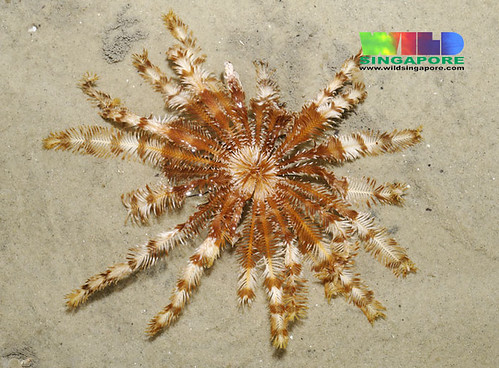
This feather star was found on the Chek Jawa intertidal;
(Photo by Ria)
Like the sea cucumbers, the filter-feeding feather stars are also echinoderms. These fragile creatures are also completely harmless to people; in fact, they are more likely to lose bits of their arms if mishandled.
Singapore is home to several species of feather stars, but they are poorly known and many of the species regularly encountered on our shores have not been conclusively identified yet.


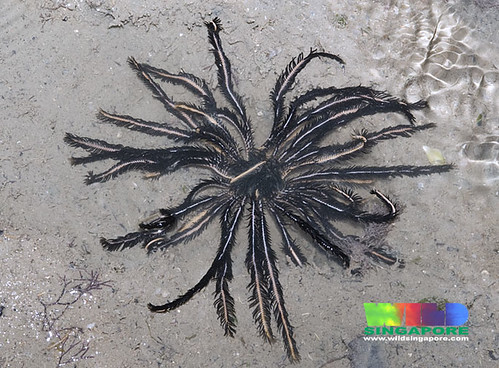
Here are other species of feather star found in Changi;
(Photos by Ria)
It's interesting to see how local anglers react when they find out that there's more to marine life than just fishes and crabs, and what they think of even common (albeit bizarre-looking) invertebrates. But seriously, calling this a 'sea monster' is a gross exaggeration. At least these harmless marine animals were released back into the water.